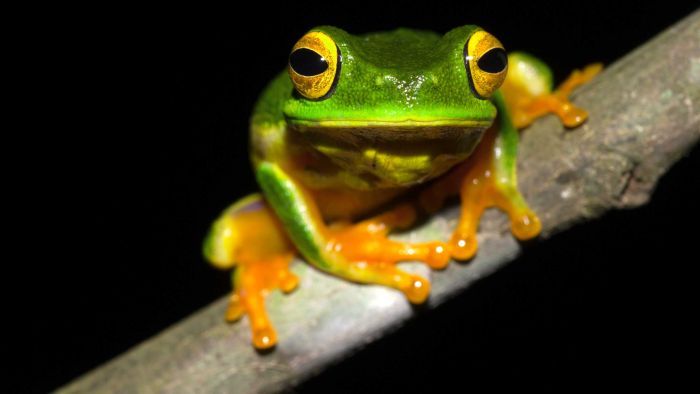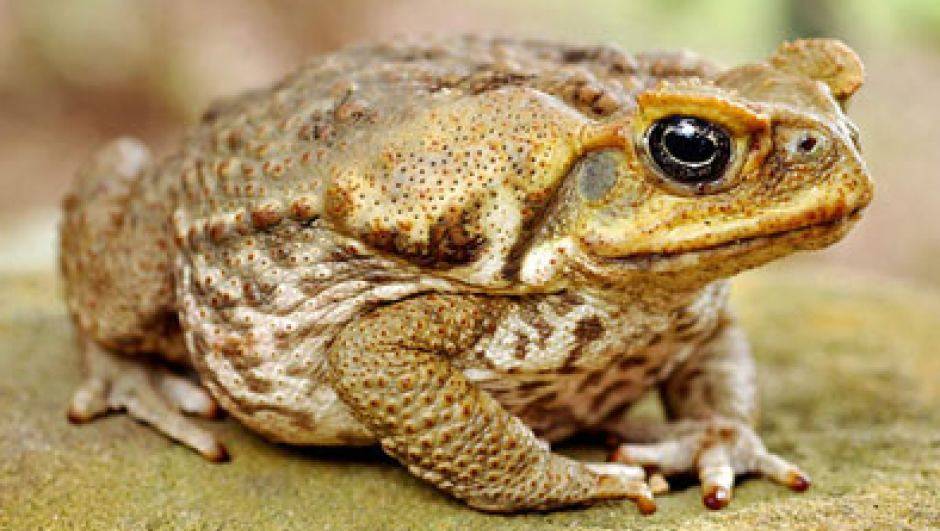Fauna and Flora of Cape Tribulation and the Daintree Rainforest
Fauna (continued)
Reptiles - Turtles and Tortoises
Saw-shelled turtle
 "Turtle" is the generic term which describes all turtles, tortoises, and terrapins. All of them have two anatomical traits in common: shell plates which are fused to their ribs and vertebrae and a pelvic girdle which sits inside the rib cage. (No, this is not a mistake - this degree of front-to-back foreshortening is necessary to enable the turtle's body to be encased entirely by a hard shell.) What differentiates turtles and tortoises is that turtles have flippers and are more adapted to an aquatic environment while tortoises have clawed feet and have evolved to function in a terrestrial environment. (Turtles in the Daintree area are freshwater tortoises adapted to a more-watery lifestyle in the Queensland wet tropics.) The most-common ones are the Eastern snake-necked turtle (Chelodina longicollis) and the saw-shelled turtle (Elseya latisternum). There are three species of marine turtles as well).
"Turtle" is the generic term which describes all turtles, tortoises, and terrapins. All of them have two anatomical traits in common: shell plates which are fused to their ribs and vertebrae and a pelvic girdle which sits inside the rib cage. (No, this is not a mistake - this degree of front-to-back foreshortening is necessary to enable the turtle's body to be encased entirely by a hard shell.) What differentiates turtles and tortoises is that turtles have flippers and are more adapted to an aquatic environment while tortoises have clawed feet and have evolved to function in a terrestrial environment. (Turtles in the Daintree area are freshwater tortoises adapted to a more-watery lifestyle in the Queensland wet tropics.) The most-common ones are the Eastern snake-necked turtle (Chelodina longicollis) and the saw-shelled turtle (Elseya latisternum). There are three species of marine turtles as well).
Amphibians
Frogs
Graceful tree frog
 Australia's only native amphibians are frogs, and the Daintree rainforest is well-supplied with them, both in variety and number. The treefrogs of the genus Litoria like the white-lipped treefrog (Litoria infrafrenata) and the graceful treefrog (Litoria gracilienta) are the most common species. The graceful treefrog, also known as the chorus frog fills rainy nights in the Daintree with its characteristic synchronised calls which start out softly, reach maximum volume, then trail off as individual frogs join and leave the chorus.
Australia's only native amphibians are frogs, and the Daintree rainforest is well-supplied with them, both in variety and number. The treefrogs of the genus Litoria like the white-lipped treefrog (Litoria infrafrenata) and the graceful treefrog (Litoria gracilienta) are the most common species. The graceful treefrog, also known as the chorus frog fills rainy nights in the Daintree with its characteristic synchronised calls which start out softly, reach maximum volume, then trail off as individual frogs join and leave the chorus.
Cane Toads
Cane toad
 The only introduced amphibian in Australia is the cane toad, formerly Bufo marinus, now Rhinella marina, introduced in 1935 to combat the cane beetle. Not only did the cane toad fail to eliminate the beetles (which can fly), but it soon became a major environmental problem in its own right. From the 102 juveniles introduced to a few areas in Queensland, they have now spread as far south as the New South Wales border, and as far west as the Queensland-NT border. As of 2014, it was estimated that they are expanding their range at the rate of about 60km per year. Those 102 animals released in 1935 have become approximately 200 million toads (about ten times the number of people in Australia). Furthermore, there is evidence that they are evolving literally "on the run" - the toads at the periphery of their range are rapidly evolving longer legs, allowing them to expand their range faster still. Lacking natural enemies and able to outbreed and outcompete native species, they appear to be unstoppable.
The only introduced amphibian in Australia is the cane toad, formerly Bufo marinus, now Rhinella marina, introduced in 1935 to combat the cane beetle. Not only did the cane toad fail to eliminate the beetles (which can fly), but it soon became a major environmental problem in its own right. From the 102 juveniles introduced to a few areas in Queensland, they have now spread as far south as the New South Wales border, and as far west as the Queensland-NT border. As of 2014, it was estimated that they are expanding their range at the rate of about 60km per year. Those 102 animals released in 1935 have become approximately 200 million toads (about ten times the number of people in Australia). Furthermore, there is evidence that they are evolving literally "on the run" - the toads at the periphery of their range are rapidly evolving longer legs, allowing them to expand their range faster still. Lacking natural enemies and able to outbreed and outcompete native species, they appear to be unstoppable.

